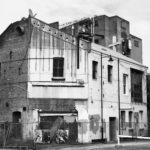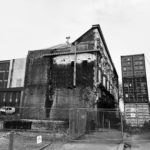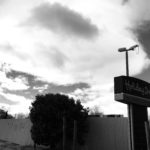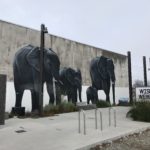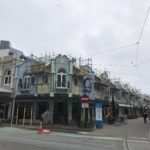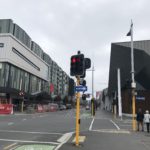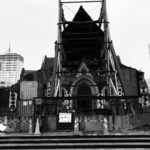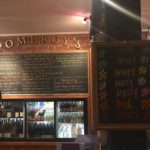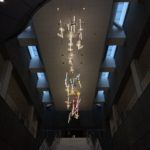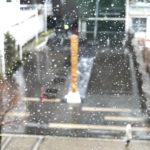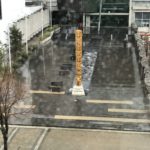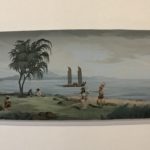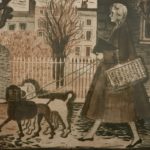Dunedin to Christchurch – 361 km (by bus)
We are on the traditional territory of the Maori
In Māori mythology, Rūaumoko is the god of earthquakes, volcanoes and seasons. He is the youngest son of Ranginui (the Sky father) and Papatūānuku (the Earth mother), (commonly called Rangi and Papa). His movements (explained in various stories) account for earthquakes.
To visit Christchurch is to get some sense of what a city goes through after a major, sudden onset disaster. New Zealand has always experienced earthquakes and the latest series to hit the Canterbury region began September 4, 2010. This quake, which occurred very early in the morning, caused widespread damage to Christchurch and surrounding areas, but no fatalities. A shallower but closer quake shook the city at midday on February 11, 2011, resulting in 185 deaths and major damage to land, buildings and infrastructure, nearly wiping out the old downtown area, where 80% of the buildings were affected. Two more quakes in June and December 2011 caused further damage. The central business district was “red zoned” and cordoned off for 800 days. Seven and one half years later, while life has returned to the city centre, many large buildings, including the Post Office, remain boarded up awaiting removal or reconstruction. Restoration of the historic provincial government seat, shored up by steel girders, is scheduled for 2029. Shipping containers were put to all sorts of uses, creating pop-up coffee shops or piled high to reinforce unsound buildings or to create a temporary mall, the latter now replaced with a brand new shopping centre. A decision to reconstruct the Gothic Revival-style Anglican Christchurch Cathedral has only just been taken, the ruins of this landmark sitting as a painful reminder of the devastation. We were intrigued by the transitional “Cardboard Cathedral”, designed by Shigeru Ban and rapidly constructed using reinforced cardboard tubes, timber and steel, with eight shipping containers forming the walls. Nearby is an outdoor installation of 182 white chairs donated by relatives of those who died. 115 of these deaths occurred when the 6-storey CTV building, declared safe in December 2010, collapsed and caught fire in the February quake.
We spent a fascinating morning in the compact museum, Quake City, learning more about the earthquakes and their impact, including very moving video testimonials from people who were immediately affected. In one video clip, a police officer on duty at the time in the basement of the police station described having to escape with 6 prisoners as the station began to flood. Emerging from the damaged building with the men all handcuffed together, he managed to find a judge standing in a nearby square and quickly organized an ad hoc bail hearing for two of the prisoners, with the terms written out on a paper receipt! When the police station had to be demolished later, 40,000 people ignored the call not to watch the controlled destruction!
It is salutary to think that the Canterbury events were small compared to many others that happen across the globe, and even with all the help and support that a developed country can give, it will still be decades before the city fully recovers. While many residents left while the central district was closed, some have returned however, and, together with workers brought in for the rehabilitation effort, the city’s population is now greater than it was in 2011.
Life goes on and there is great coffee (see below), excellent food and warm hospitality. The Heritage Hotel which had undergone a seismic upgrade in the 90’s, has a lovely bar with a good menu. Christchurch Art Gallery, Te Puna o Waiwhetu, built in 2003, which also survived relatively intact, introduced us to New Zealand artists of the 20th and 21st Century. Above the main stairs is a great piece by Bill Culbert called Bebop, which has a fascinating provenance.
A walk along the Avon River and through the Botanic Gardens was a peaceful contrast to the destruction and rebuilding in the centre, with the exception of the Holiday Inn sign standing alone overlooking the Avon.
Coffee notes:
The Caffeine Laboratory: single origin Ethiopian- 9/ 10
C4 Coffee – many locations – 8.5/ 10
Christchurch Art Gallery
Parkinson’s Disease Note:
Given our findings related to other countries it was not unexpected that we learned that the prevalence of PD in New Zealand is much the same as in other countries. When we were in France we discovered that pesticide exposure is now accepted, for worker’s compensation purposes, to be an occupational risk for PD. In New Zealand we found a news report that exposure to Trichlorethylene, used as a chemical solvent had recently been accepted to be a cause of PD in a veteran who had been a sailor in the New Zealand Navy.
While in Christchurch we read that the effects of the earthquakes on the mental health of persons with PD had been studied using the Hospital Anxiety and Depression Scale. Interestingly no significant differences were found comparing status before and after the earthquakes.


